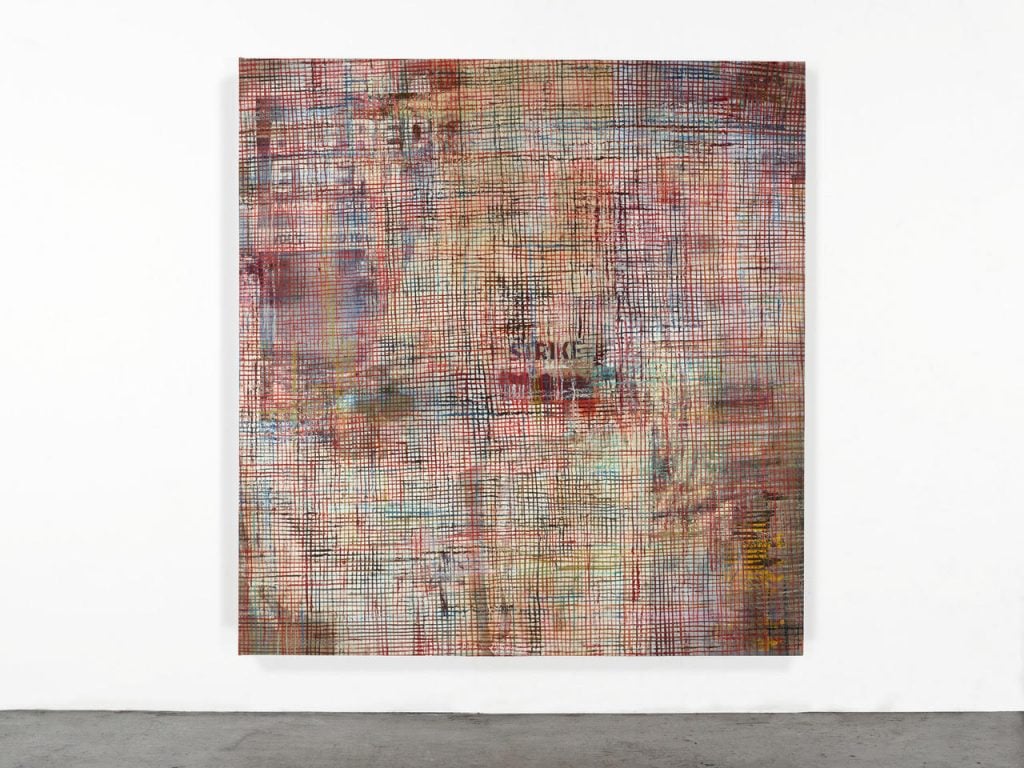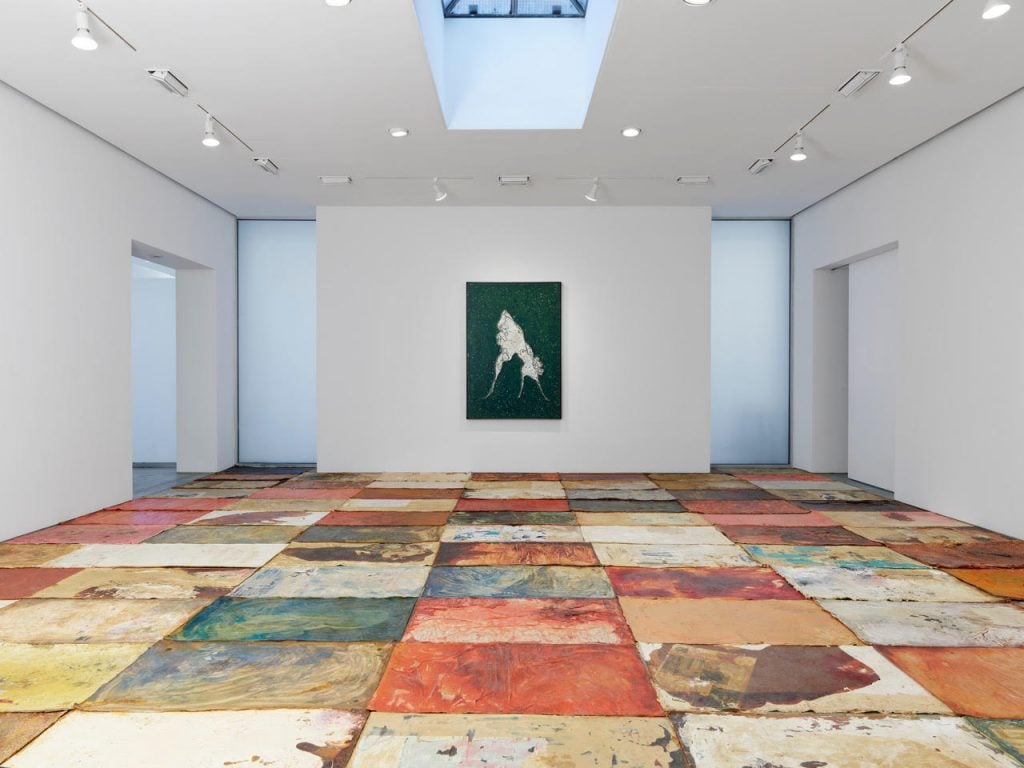Studio Visit
Artist Mandy El-Sayegh on Making Her Studio Into a Bedroom, and the Kind of Art She Doesn’t Care for
El-Sayegh is currently enjoying her first solo show in Seoul.

El-Sayegh is currently enjoying her first solo show in Seoul.

Artnet News

The Malaysian-born artist Mandy El-Sayegh’s large-scale, layered canvases, which are constructed from “found fragments” and call attention to a world in flux, have caught the attention of the art world in recent years.
Her first solo exhibition in Seoul at Lehmann Maupin, titled “Protective Inscriptions” (through July 17), features “an immersive installation, combining painting and soundscape to activate a formless language of flesh and vibration,” according to the gallery. It also includes the everyday items that have become common in her work: old copies of the Financial Times, iconography from familiar advertisements, doodles, and pages of Arabic calligraphy taken from her father’s home in London.
Altogether, the works prod the artist’s fractured experience of identity, and suggests “the intricacies of growth and decay as they happen in real time,” El-Sayegh said.
“I’m interested in this idea of lost time and the impossibility of finding a moment of origin,” she said. “My work builds fragmented histories into absurdist bodies and forms.”
We spoke with El-Sayegh about life in her studio, being a night owl, and why great art demands “a sense of honest vulnerability.”

Mandy El-Sayegh, “Net-Grid” (2020). Photo courtesy Lehmann Maupin.
What are the most indispensable items in your studio and why?
Impossible to answer, as I hoard everything and need every little scrap around me and in my periphery.
What is the studio task on your agenda tomorrow that you are most looking forward to?
Steam cleaning the lino floor after days of using it to prime surfaces.
You have a show on in Seoul. What can people expect to see?
Interesting biomorphic textures and forms.

An installation image from El-Sayegh’s show, “Recombinance,” with Lee Bull. Photo courtesy Lehmann Maupin.
What kind of atmosphere do you prefer when you work? Do you listen to music or podcasts, or do you prefer silence?
I am a night owl, so I emulate a bedroom situation with all my creature comforts: bass-heavy music for at least 8 hours, lots of warm LED lamps. Though there are times that call for silence.
What trait do you most admire in a work of art? What trait do you most despise?
A sense of honest vulnerability in testing an idea that teeters on the edge of failure, where there is something at stake. Conversely, I tend not to like anything too virtuoso and sure of itself.
What snack could your studio not function without?
Something salty after the night shift: nocellara olives, lebne, zaatar, unpasteurized OJ, and milk thistle to detox the vodka.

Installation view of El-Sayegh’s “What’s it called? Nothing, I just collect stuff, I’m a yard man” (2020) at the Busan Biennale in 2020. Photo courtesy Lehmann Maupin.
Who are your favorite artists, curators, or other thinkers to follow on social media right now?
A lot of the curators and thinkers I follow don’t have a big social media presence. The few that do are: Novara media, Natalie Wynn, Daniel Tutt.
When you feel stuck in the studio, what do you do to get un-stuck?
Run, shower, leave, tidy, start another thing.

Installation view of “Mandy El-Sayegh & Lee Bul: Recombinance” (2021). Photo courtesy Lehmann Maupin.
What is the last exhibition you saw (virtual or otherwise) that made an impression on you?
I honestly cannot recall.
If you had to put together a mood board, what would be on it right now?
DNA sequencing, xerox fanzines from the ’70s, blunt force trauma wounds.